Hi, my name is Anne and I live in a small town near Nuremberg in Germany. Photography has always been a hobby of mine, but it was the toys that made me want to learn more about it. A few years ago, when I was looking for something in the attic, I came across boxes of my old toys. It was like discovering a treasure trove of wonderful childhood memories. To preserve these memories, I had the idea to take photos of them.
The journey with toys has been going on for five years now, and there are still many ideas on my bucket list I want to do. What I like most about toy photography is that there are so many ways to be creative, whether it’s crafting props or dioramas, photo techniques or experimenting with light.
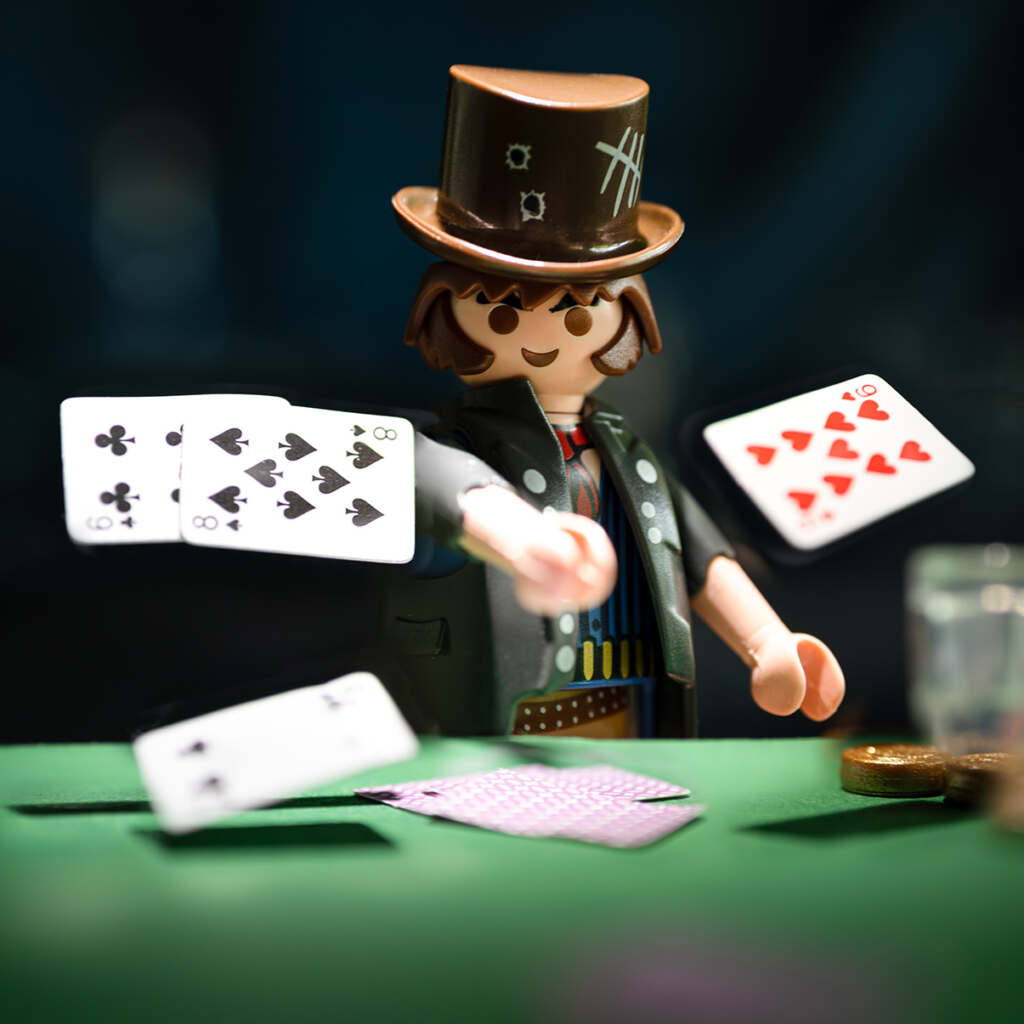
To make it look like the toys are really doing something, real life photos can be a great source of inspiration. When I see an interesting scene, I first look whether there is a toy in my collection that I can use to recreate it. It may happen that this recreation doesn’t work or turns out completely different. But this is still a very good place to start. Beyond this process, illustrations in children’s books are very inspiring. Often there are lots of little details to discover that make a scene more vivid. Quotes and lines from songs also trigger emotions that I use to generate ideas.
My Process
It all starts with getting the props and accessories out of the boxes where I keep them in. I enjoy deciding which figures will work best and then setting up the scene or diorama. The next step is adding reflectors and lights to set the mood.
If there are pictures where objects are supposed to float in the air, like butterflies, these parts are supported by wires. I always take a few test photos and make any necessary changes. When I’m photographing outside, my goal is to find a place where the light is best.
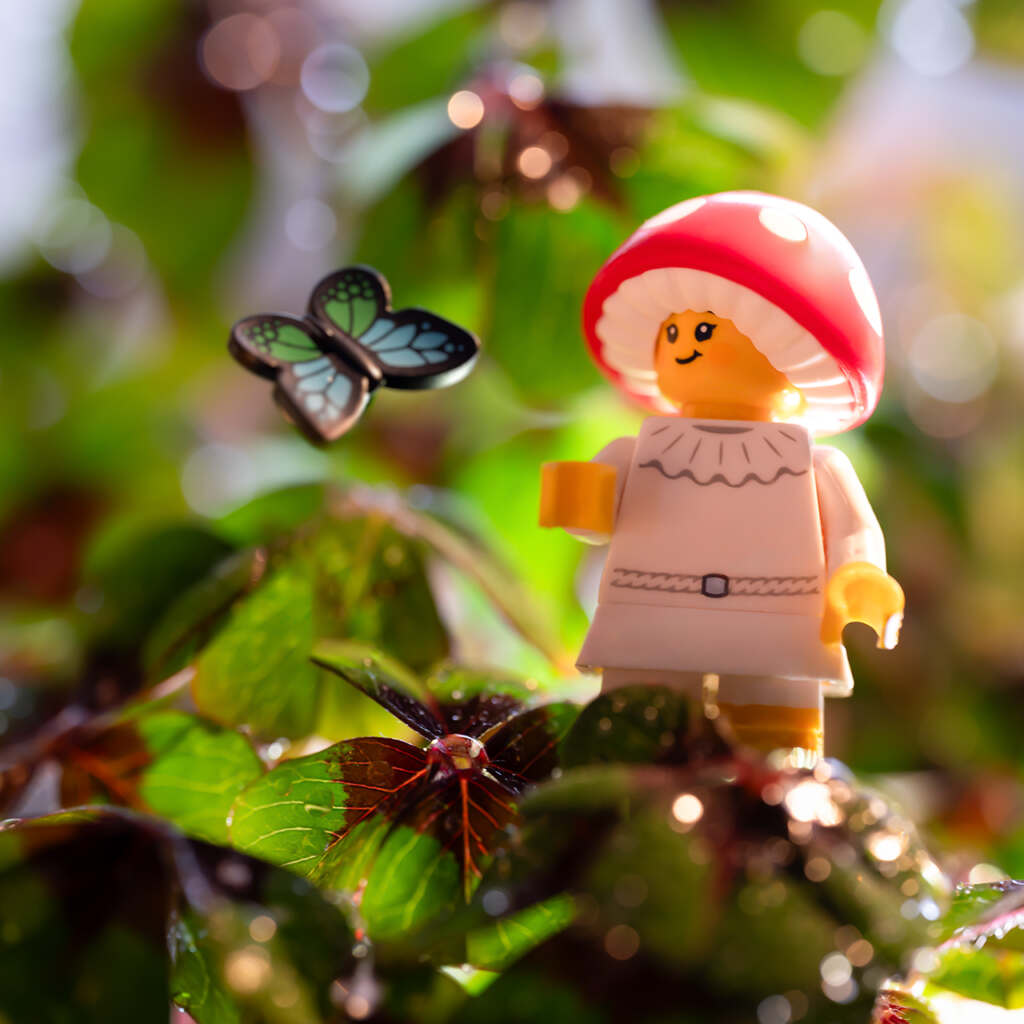
For editing my photos I use the desktop versions of Lightroom and Photoshop. Lightroom is great for editing the raw images. While Photoshop offers tools to remove wires, glue (helps to support the figures) or dust that shouldn’t be seen in the final shot. Although I love the process of taking photos, editing a shot with a floating object can also be a lot of fun, even if it takes some time. The result creates an illusion which surprises me eventhough I’ve already done it a few times.
My current setup of equipment includes:
- Nikon Z 6 II
- Nikkor MC 105mm f/2,8
- Nikkor MC 50mm f/2,8
- Nikkor 50mm f/1,8
- Sirui Monopod
Photographing outdoors
It’s always a bit of an adventure to take photos outdoors. It’s an adventure I really enjoy. If it happens to be nice weather, I will pack everything up and go outside. But some scenes are easier to do at home. For these I place them on a table near a window and work with the incoming light.
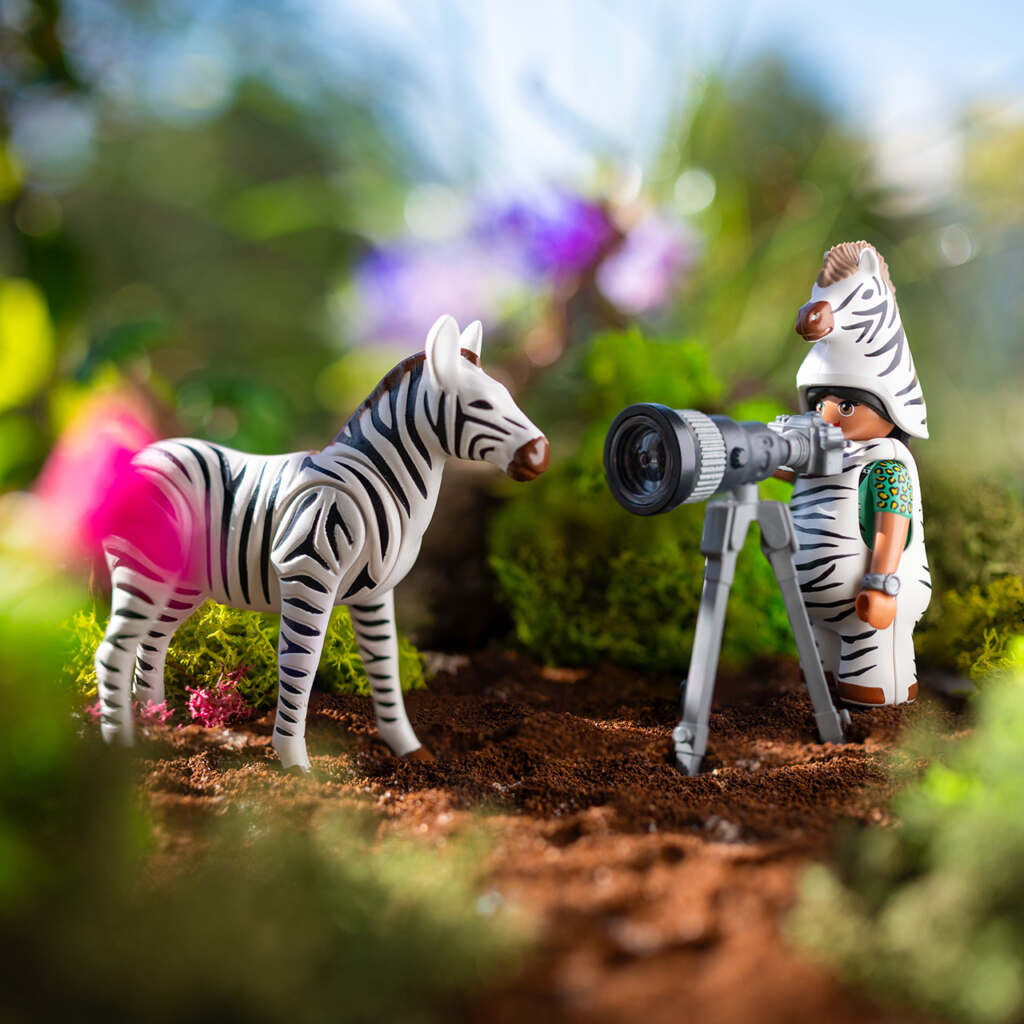
My essential tools for photographing include:
- adhesive pads
- wooden skewers
- spring clips
- foam boards to bounce the light
- floral wire
- small led lights and flashlights
I keep a box with all kinds of glittering things including fairy lights to create and enhance the Bokeh effect when needed. I also have another box with natural materials such as branches, stones, dried moss. At my kitchen window there are small potted plants I sometimes use to make a scene look natural.
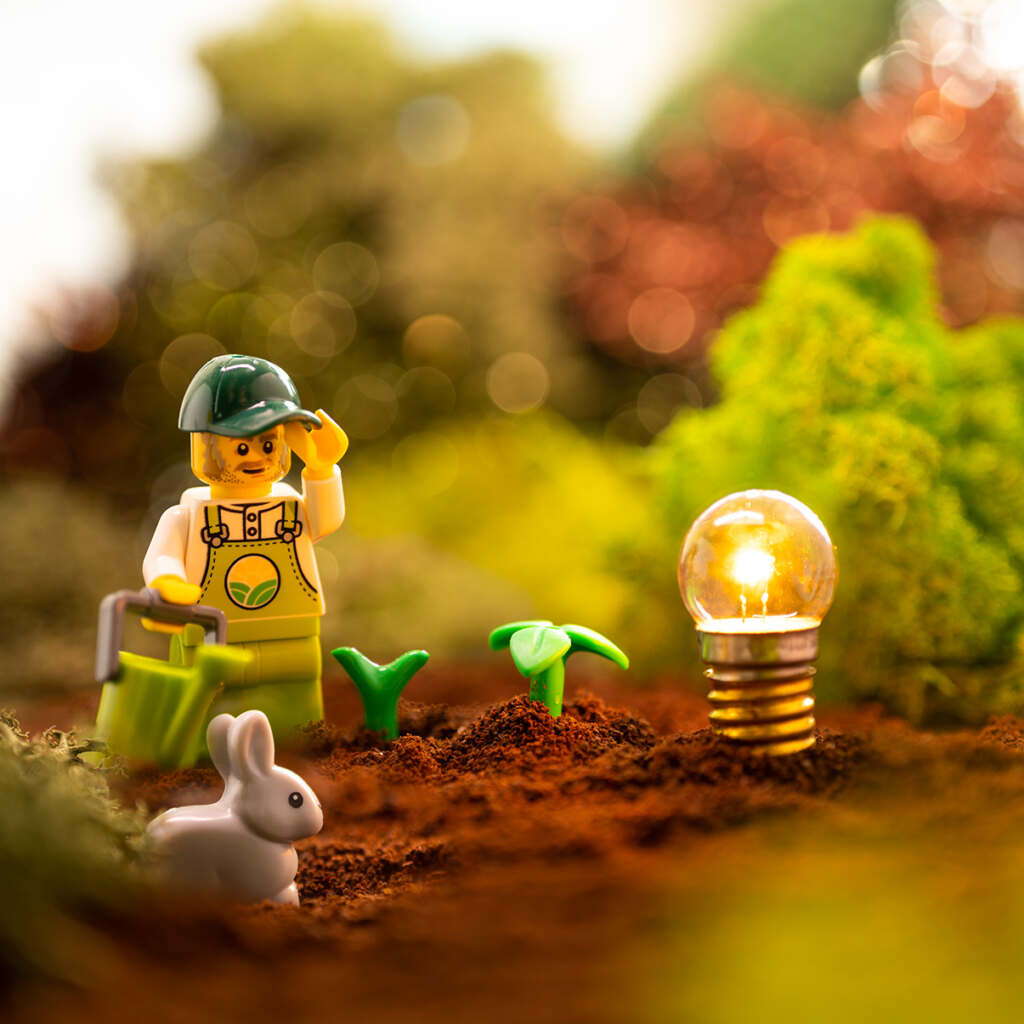
What I’ve learned
In the past when I had an idea I tried to realize it immediately. Sometimes it worked, but most of the time it did not. The biggest challenge for me is to be patient and not to skip a detailed planning of the shot. Taking notes in advance, gathering everything I need, preparing the lighting always makes the process easier.
You may have noticed that Lego and Playmobil are my favorite toy lines. They were my favorites when I was a kid which is why I photograph both of them. This decision has helped me learn more about photography. Because of their different scales, the Lego minifigures and the Playmobil figures require a different approach. This can concern the setting, the lighting, or the size of the props.
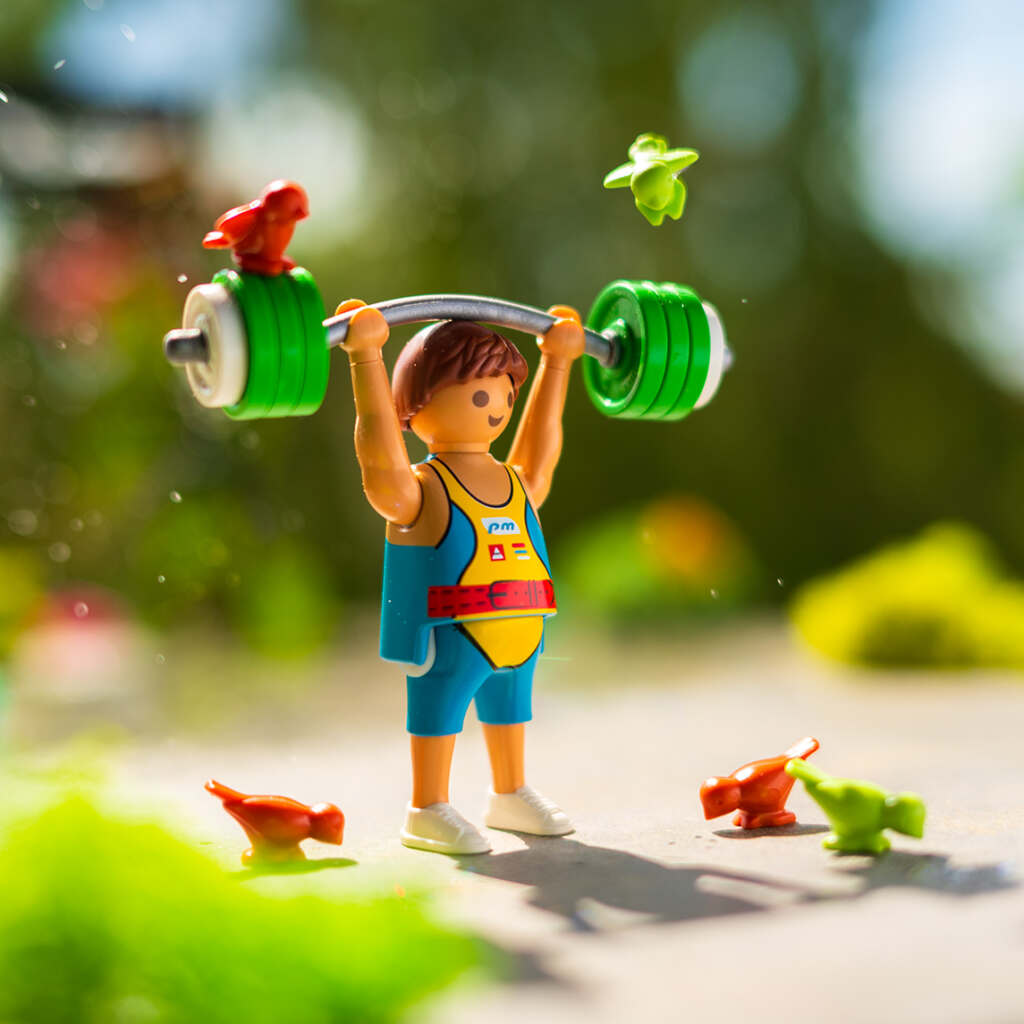
When you go outside to take toy photos it’s always a bit of an adventure. Especially during early morning hours. A few years ago I went to a nearby wood, placed a figure on the ground, took out the camera, when suddenly two deer came out of the trees very close to me. I have never been so near to a wild animal of this size before. It was a beautiful moment that lasted only seconds. It was a moment to enjoy without taking a picture.
Tips
I’ve learned that it doesn’t take a perfect image to appeal to the viewer. Posing the figures and storytelling are the main aspects of toy photography that I’m always working to improve. There’s always something to learn from the process. I like to see when a figure does something such as looking at or interacting with a prop or another figure.
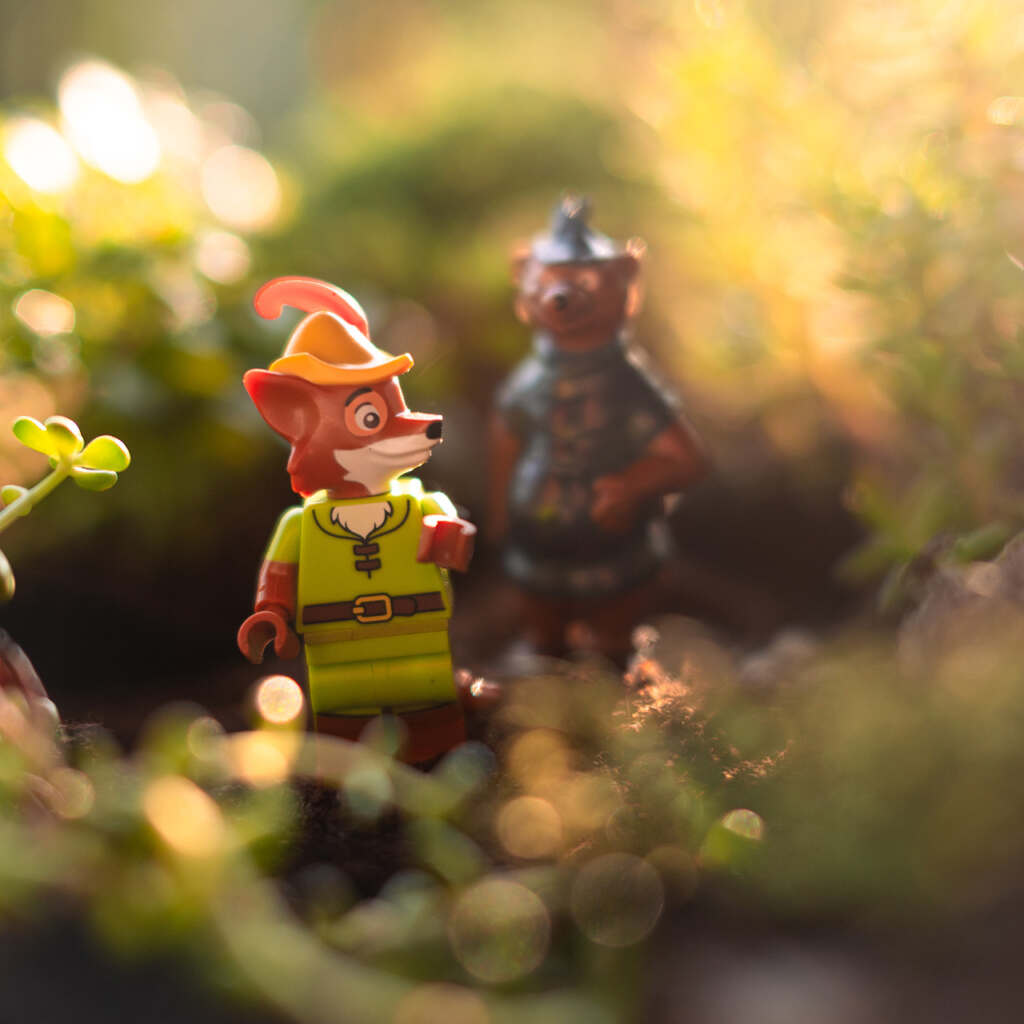
I think its important to look at the work of other toy photographers for inspiration. Not to compare yourself, but to learn. Spend time developing your ideas and not too much time on trying to please an algorithm.
Today I wouldn’t rely on only one social media plattform anymore. It takes time to take photos, your work deserves to be seen. Keep an eye out for other photo communities, even when they are small. Maybe you won’t get thousands of followers, but you can get good and positive feedback there too. This can be more motivating for your photography than anything else.
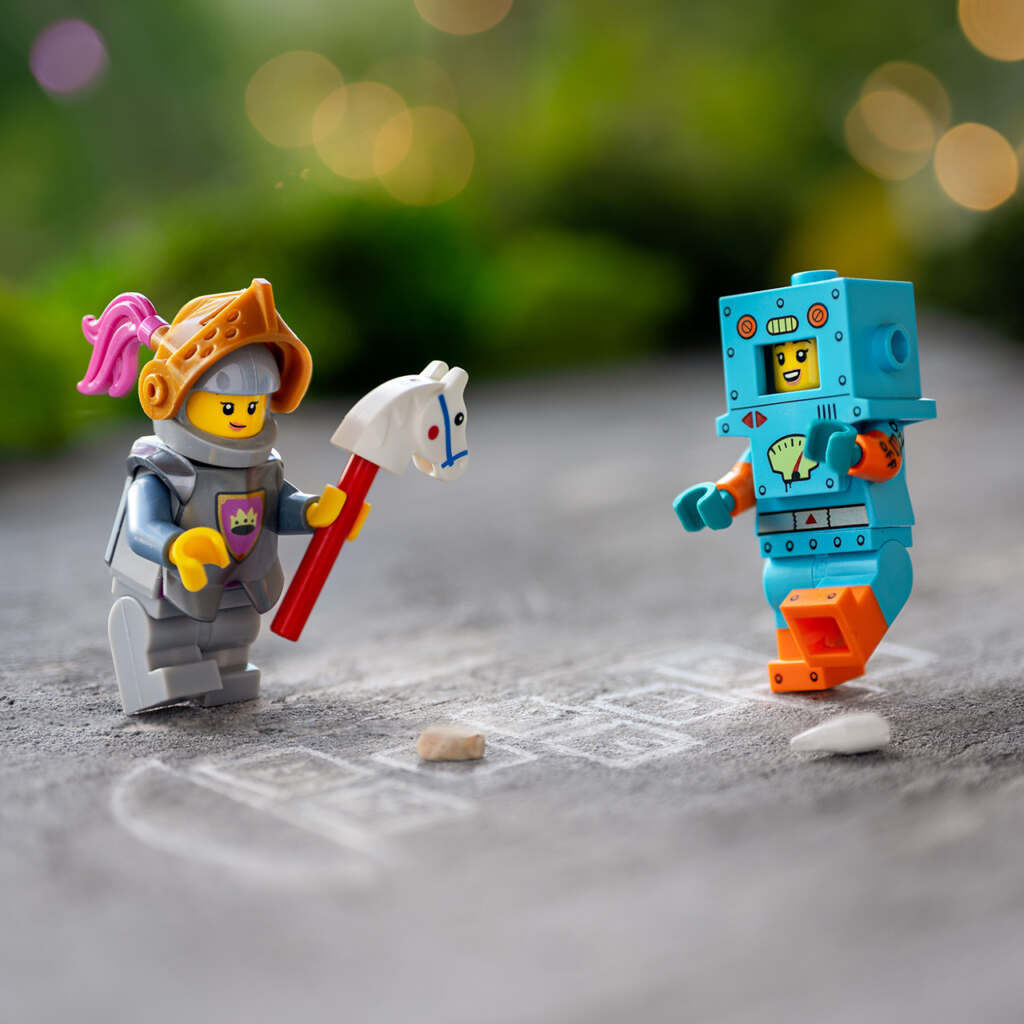
In conclusion
Toy photography is a wonderful hobby that offers so many ways to get creative. Try them all out, there’s much to explore.
For me, the greatest joy is when my images make a viewer smile. If my images makes a person feel good, that is the greatest reward. I always treasure the moments when a fellow toy photographer whose work I admire comments on one of photos.
Pease check out more of Anne’s work on Instagram and other social media platforms.
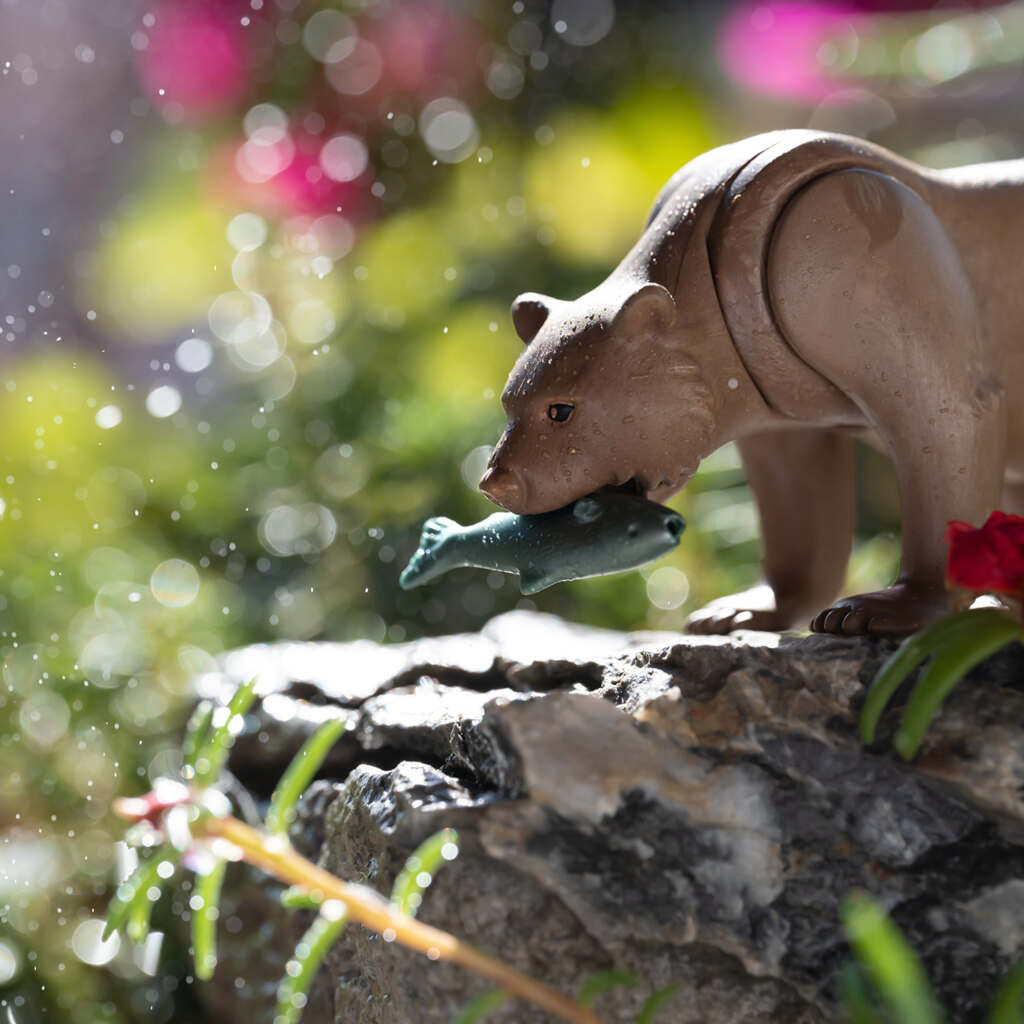


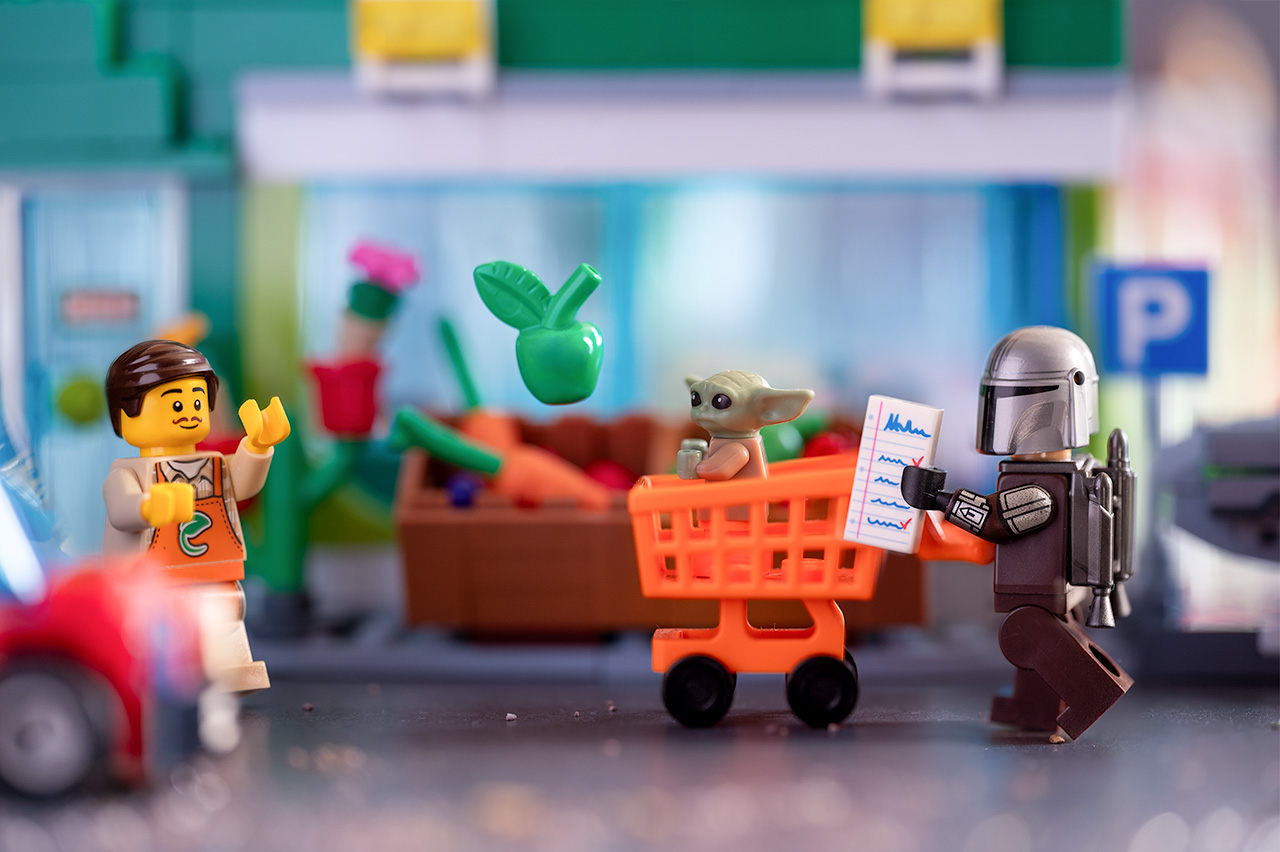
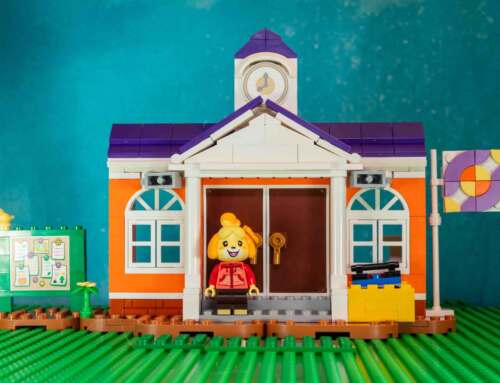
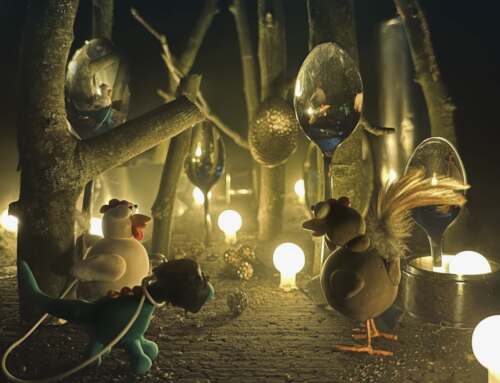
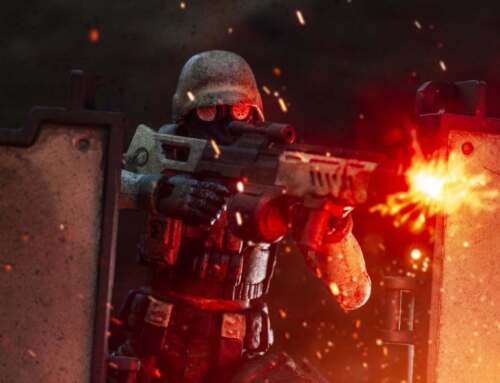
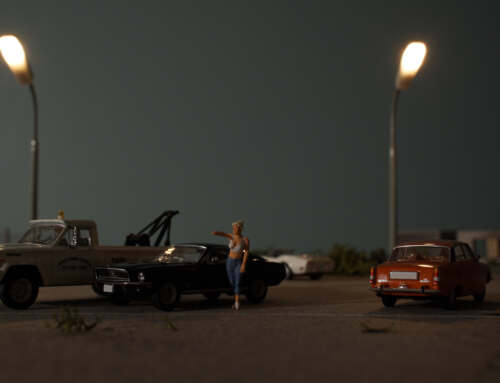
Thank you for sharing your story! Your work does make me smile!
Oh Anne — what a treat to read your post and see so many of your wonderful pictures. I really enjoyed learning more about your toy photo journey and process. You know I love your photography – and I’m grateful you shared more of the context for your work here. Awesomeness!